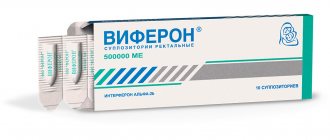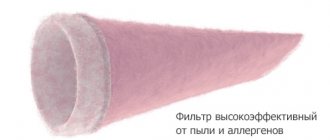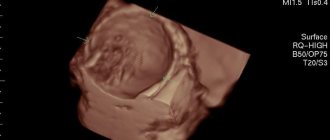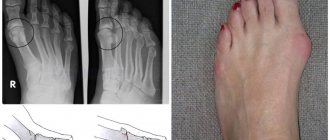Diphtheria is a serious infectious disease known to people for many centuries. Previously, it was called strangulation loop, malignant tonsillitis, Sicilian ulcer, strangulation disease, diphtheria, and so on.
Galen, Hippocrates and many other ancient doctors mentioned diphtheria in their works. But it would be a mistake to believe that diphtheria is a thing of the distant past and no longer threatens modern children.
Of course, the incidence has decreased hundreds and thousands of times, and deaths from diphtheria have become rare, but the likelihood of becoming infected remains to this day.
Diphtheria is an acute infectious and inflammatory disease caused by corynebacteria. Pathogens affect the mucous membranes, primarily the oropharynx, less often the larynx, nasal mucosa, eyes, ear canals, and genitals.
The main danger of this bacterium is the toxins it produces. They spread through the bloodstream throughout the body, damaging organs and tissues, primarily the nervous system, heart muscle and kidneys. In addition, diphtheria provokes severe inflammation of the larynx (croup), blockage of the airways with films, spasm and swelling.
It is acute respiratory failure in combination with general intoxication of the body that leads to death.
Diphtheria can affect people of any age, but it is most dangerous for children. Before the invention of the vaccine and antitoxin, the mortality rate reached 50%. But even today, with the availability of modern methods of therapy, the probability of death remains in 5–10% of cases.
How can you become infected with diphtheria?
The main route of transmission of this disease is airborne droplets. Most often, infection occurs indoors, in groups, especially children's.
In addition, other transmission mechanisms are possible: through objects, for example, books, cutlery, toys. Outside the human body, the pathogen does not retain its activity for long, so this route is more rare. In some cases, mass infection was recorded through food, especially dairy products, where bacteria can actively multiply.
The source of infection is always a person with diphtheria or an asymptomatic carrier. The more severe the disease, the more pathogens a person releases into the environment.
How can diphtheria occur?
Diphtheria pathogens can settle on the mucous membrane, as well as on damaged skin. Therefore, there are several primary localizations:
- Oropharynx. This is a typical option, which is recorded in 90–95% of all cases. The palatine tonsils are the first to be affected, so at an early stage the disease looks like tonsillitis or tonsillitis. Such diphtheria can be catarrhal, when only the tonsils are inflamed, or widespread, involving the palatine arches, palate, larynx, and so on. Following diphtheria of the oropharynx, secondary inflammatory processes may begin.
- Nose. Inflammation of the nasal mucosa can be either a primary form or a complication of oropharyngeal diphtheria. With this form, a runny nose begins, there may be plaque and diphtheria films on the nasal mucosa, and weeping areas appear on the skin. General symptoms rarely appear.
- Eyes. Most often it manifests itself as conjunctivitis, the appearance of diphtheria films on the mucous membrane, and swelling of the eyelids is possible. This form also rarely provokes the appearance of general intoxication.
- Ears. In most cases, ear diphtheria is a complication of another form of the disease. Damage to the inner ear is possible when pathogens spread through the Eustachian tube, or to the external ear when carried by hands or objects. Signs of this form are pain in the ear, discharge from the ear canal. Upon examination, diphtheria films, weeping plaque, and signs of inflammation are found in it.
- Genital organs. A rare form, most often it is a complication. The mucous membranes are inflamed and films appear on them.
- Wounds. It can develop if a pathogen gets into a wound or scratch. There are signs of local inflammation around the wound; there may be films. Such skin damage heals slowly.
Regardless of the primary localization, diphtheria can occur in different ways:
- Asymptomatic carriage. Laboratory diagnostics reveals the presence of pathogens on the affected mucosa, but there are no symptoms of the disease. Carriage can last up to several months.
- Catarrhal diphtheria. The inflammation is local, there are no signs of intoxication. The disease is mild and does not cause general symptoms or complications. Like carriage, it is typical for people who have been vaccinated.
- Subtoxic. There may be signs of general intoxication, such as fever, headache and general malaise, but there are no complications.
- Toxic. Develops in unvaccinated people. It is difficult to tolerate; on the 2nd–3rd day of the course, general symptoms appear: high fever, headaches, malaise, shortness of breath. Without treatment, complications develop: damage to the nervous, respiratory, and cardiovascular systems.
- Hypertoxic. It is characterized by a lightning-fast, severe course. Death is possible already on the second day.
In most cases, toxic diphtheria of the oropharynx occurs. Therefore, it is its symptoms that you should focus on first.
Etiology (causative agent and causes)
The causative agent of diphtheria belongs to the genus Corynebacterium, represented by a large group of microorganisms designated as coryneform bacteria or diphtheroids. According to the morphological properties, Corynebacterium diphtheriae is a rod with rounded thickened ends (due to the presence of volutin grains), which determined the generic name. However, in culture it exhibits pronounced polymorphism (coccoid, flask-shaped, segment-shaped, filamentous and other forms).
Can form L- and filterable forms. The spore does not form capsules, is immobile, has fimbriae on the surface, toxigenic strains have a microcapsule, which includes a cord factor. Gram stains positive; volutin grains are detected by Leffler or Neisser staining. Facultative anaerobe, grows well in the presence of oxygen at 37°C. More often, blood media with tellurite are used for cultivation, to which diphtheria bacteria are resistant, but the accompanying flora is sensitive.
The antigenic structure is heterogeneous. There are O- and K-antigens. Species specificity is due to surface thermolabile K-antigens (nucleoproteins, proteins); based on their identification, serological typing of C. Diphtheriae (about 58 serovars) is carried out. Based on morphological, cultural, biochemical, and antigenic properties, there are 3 main biovars: gravis, mitis, intermedius.
To learn more
|
The virulence factors of the pathogen primarily provide it with the ability to adhere to the epithelial covers of the mucous membranes (much less often on the wound surface of the skin) and colonize them. These include fimbriae, surface K-antigens, cord factor, as well as the presence of enzymes such as proteases, hyaluronidase, neuraminidase, deoxyribonuclease, ribonuclease, which are involved in overcoming the protective barrier of parietal mucus.
In addition, enzymes, through their participation in the breakdown of mucus glycoproteins, provide bacteria with energy raw materials and thereby stimulate their growth and reproduction on the surface of the epithelium. C. Diphtheriae does not have invasive properties. The main virulence factor of C. Diphtheriae, responsible for all clinical manifestations of the disease, is a heat-labile protein exotoxin.
Strains of C. Diphtheriae that do not produce toxin do not cause diphtheria. The ability to form toxins is associated with the presence in toxigenic strains of C. Diphtheriae (regardless of the biovariant) of the tox gene, which encodes the structure of the toxin. The acquisition of the tox gene is due to lysogenization of the bacterium by a temperate phage. In addition to toxin synthesis, the tox gene provides resistance of the bacterium to the action of lytic phages and phagocytosis. Diphtheria exotoxin consists of two fragments: high molecular weight dermatonecrotisin and low molecular weight histotoxin. According to the mechanism of action, both fragments are the same, but the toxic activity of histotoxin is higher. Native histotoxin, like all bacterial toxins, consists of two subunits (fragment B is a conductor, fragment A is the toxin itself).
Fragment “A” inside the target cell exhibits enzymatic properties and is an inactivator of transferase, which causes elongation of the polypeptide chain on the ribosome. Those. exotoxin exhibits the properties of a cytotoxin, disrupting intracellular protein synthesis, which causes necrosis of sensitive cells. The target of the toxin is any eukaryotic cell, but the necrotizing effect is most pronounced primarily on epithelial cells, then endothelial cells, cardiomyocytes, cells of the myelin sheaths of peripheral nerves, the adrenal cortex, and the tubular epithelium of the kidneys.
The toxic activity of diphtheria exotoxin prevails over its immunogenicity. In a dried fibrin film at room temperature, the pathogen remains viable for up to 7 months, on household items for 1-2 weeks, in dust for up to 5 weeks, in milk and water for about 3 weeks. Disinfectants and antiseptics in normal concentrations cause the death of the pathogen within 1 (ethanol) -10 (chloramine, phenol) minutes, boiling kills the microbe within a minute.
How does diphtheria manifest itself?
It is not for nothing that this disease is often compared to a sore throat. In the first one or two days, their symptoms actually coincide in many ways: inflamed tonsils, sore throat, fever, enlarged lymph nodes.
- Plaque on the tonsils. In the early stages, plaque covers them with a thin layer, similar to a cobweb, and is easily separated. But after 2–3 days, a dense, glossy, gray-white film forms on the tonsils. It is not removed from the tonsils, and when trying to artificially separate it, a bleeding surface opens.
- Heat. If in the first 1–2 days the temperature rarely rises above 38.5 degrees, then with the onset of intoxication it can reach 40 degrees and above.
- General intoxication. This condition develops quite quickly and can be severe. In addition to high temperature, general weakness, lethargy, pale skin, and lack of appetite are noted.
Due to the fact that the early signs of diphtheria are in many ways similar to a sore throat, any inflammation of the tonsils requires consultation with a doctor. If you miss the onset of diphtheria, there is a high probability of complications.
How dangerous is diphtheria?
The toxin produced by corynebacteria has a detrimental effect on all tissues of the body, but primarily the heart muscle and nervous tissue suffer because of it. Therefore, in the second week of the disease, myocarditis often begins, as well as disorders of the nervous system: partial paralysis of individual muscles, involuntary twitching, spasms, sensory disturbances, muscle weakness, and so on.
Along with general intoxication, the most dangerous complication of diphtheria is true croup. It occurs when inflammation from the tonsils spreads to the larynx. At first the voice changes, it becomes hoarse, hissing, and gradually disappears altogether. At the same time, a rough barking cough appears without sputum production.
With true croup, two conditions develop simultaneously: the lumen of the larynx is covered with diphtheria films, and also narrows due to tissue edema. The latter can be noticed by the increase in neck volume.
Without immediate treatment, croup can lead to respiratory failure and death due to suffocation.
Vaccines
Vaccines against diphtheria contain the main component that forms the body's immune response, but does not cause disease - diphtheria toxoid. Today, combination vaccines are effective. They contribute to the development of stable immunity to several infectious diseases at once. The combination of diphtheria toxoid and other components in such vaccines is immunologically substantiated and favorable. Thanks to this, the number of injections is reduced, and the effectiveness of immunization becomes higher.
- DTP (vaccine against whooping cough, diphtheria and tetanus). It is a standard vaccine that is administered to children from infancy. It contains inactivated cells of the causative agent of whooping cough, diphtheria bacillus and tetanus toxoids.
- DDT (diphtheria and tetanus vaccine). The drug is classified as bivalent, as it successfully copes with immunization against two infections and is used for revaccination. This immunobiological drug is used for children who have already had whooping cough or who are contraindicated for the DTP vaccine for one reason or another.
- ADS-M (vaccine against diphtheria and tetanus). Children over 6 years of age and adults need a smaller dose of toxoids to produce the same lasting immunity, and this makes the vaccine more tolerable.
The emergence of imported polyvalent (multicomponent) vaccines makes it possible to effectively and safely vaccinate children against dangerous infections, including diphtheria. Diphtheria toxoid is included in the vaccines Pentaxim, Infanrix, Infanrix Hexa, Adasel.
At your appointment, a pediatrician, therapist or immunologist can explain in detail the differences and benefits of different combination vaccines and create an immunization schedule for diphtheria and other infectious diseases.
How is diphtheria diagnosed?
At any, even the slightest suspicion of this condition, the doctor recommends undergoing minimal diagnostics. As a rule, to establish the presence of a pathogen, it is enough to take a swab from the throat and nose. In the laboratory, it is examined under a microscope and, if pathogens are found in it, the necessary treatment is prescribed.
In addition to smear bacterioscopy, other diagnostic methods may be required, primarily bacteriological culture. It gives a more accurate result, and also allows you to determine the number of pathogens, and therefore the severity of the disease or the effectiveness of treatment.
Not only potential patients with diphtheria, but also all people who have been in contact with them need to undergo diagnostics. This often makes it possible to detect bacteria carriers, which means preventing further spread of the infection.
Diagnostics
Diphtheria is diagnosed based on examination of the patient and test results. Upon examination, the diagnosis of diphtheria is indicated by the following signs: the presence of characteristic films, as well as difficulty breathing and a whistling noise when inhaling, not characteristic of a sore throat, a barking cough. The diagnosis of diphtheria based on characteristic clinical signs in a mild form of the disease is more difficult to make.
Analyzes:
- A general blood test shows signs of an acute inflammatory process.
- Examination of a smear under a microscope (bacterioscopy) - identification of the characteristic bacteria Corynebacterium diphteriae.
- Bacteriological research is the inoculation of biological material on a special nutrient medium and the cultivation of colonies of microorganisms.
- Determination of the level (titer) of antitoxic antibodies (a high titer of 0.05 IU/ml and above allows diphtheria to be excluded).
- Serological study - determination of specific antibodies in blood serum using the methods of RPGA, ELISA, etc.
Diphtheria of the pharynx must be differentiated from acute tonsillitis (follicular and lacunar forms), Simanovsky-Vincent angina (fungal infection), syphilitic angina, pseudofilm angina with infectious mononucleosis, paratonsillar abscess, mumps, leukemia. In children, the diagnosis of false croup should be avoided.
How can you avoid diphtheria?
The only specific method of preventing this disease is timely and complete immunization. The course of vaccinations is recommended to begin at 3 months after birth. It consists of several blocks:
- 3 vaccinations with an interval of 1.5 months: at 3 months from birth, at 4.5 and 6;
- buffer vaccinations to maintain immunity: at 1.5 years, at 4–5 and 14–15 years;
- lifelong periodic immunization every 10 years.
Do not think that diphtheria is a purely childhood disease, and adults do not need protection from it. You can get infected at any age, and it is always severe, although, indeed, it poses the greatest danger to children.
Important! Even previous diphtheria does not guarantee protection from re-infection. To exclude it, you should complete the course of immunization. In this case, the disease suffered is considered the first vaccination.
It's never too late to get vaccinated against diphtheria. If the child did not receive them at the right time in childhood, if the scheme was violated or too much time has passed since the last one, the course is started from scratch at any age. Up to 7 years of age, a “children’s” scheme is used, adjusted for age; adults receive several vaccinations: upon application, after a month and after a year.
Treatment at the Mama Papa Ya clinic
The network of family clinics “Mama Papa Ya” offers vaccination services for children and adults, identification of pathogen carriers, and consultations with doctors of various specialties. Our advantages:
- an extensive network of branches in Moscow and other cities;
- affordable prices for medical services;
- full consultation on vaccination issues, assistance with choosing a drug, including allergic reactions;
- restorative treatment of corynebacterium carriers;
- examinations and consultations with specialists (cardiologist, neurologist) in the event of the development of complications of the disease.
If you have any questions about this topic, please make an appointment with the clinic by phone or on our website.
Reviews
Good clinic, good doctor!
Raisa Vasilievna can clearly and clearly explain what the problem is. If something is wrong, she speaks about everything directly, not in a veiled way, as other doctors sometimes do. I don’t regret that I ended up with her. Anna
I would like to express my gratitude to the staff of the clinic: Mom, Dad, and me. The clinic has a very friendly atmosphere, a very friendly and cheerful team and highly qualified specialists. Thank you very much! I wish your clinic prosperity.
Anonymous user
Today I had a mole removed on my face from dermatologist I.A. Kodareva. The doctor is very neat! Correct! Thanks a lot! Administrator Yulia Borshchevskaya is friendly and accurately fulfills her duties.
Belova E.M.
Today I was treated at the clinic, I was satisfied with the staff, as well as the gynecologist. Everyone treats patients with respect and attention. Many thanks to them and continued prosperity.
Anonymous user
The Mama Papa Ya clinic in Lyubertsy is very good. The team is friendly and responsive. I recommend this clinic to all my friends. Thanks to all doctors and administrators. I wish the clinic prosperity and many adequate clients.
Iratyev V.V.
We visited the “Mama Papa Ya” Clinic with our child. A consultation with a pediatric cardiologist was needed. I liked the clinic. Good service, doctors. There was no queue, everything was the same price.
Evgeniya
I liked the first visit. They examined me carefully, prescribed additional examinations, and gave me good recommendations. I will continue treatment further; I liked the conditions at the clinic.
Christina
The doctor carefully examined my husband, prescribed an ECG and made a preliminary diagnosis. She gave recommendations on our situation and ordered additional examination. No comments so far. Financial agreements have been met.
Marina Petrovna
I really liked the clinic. Helpful staff. I had an appointment with gynecologist E.A. Mikhailova. I was satisfied, there are more such doctors. Thank you!!!
Olga










